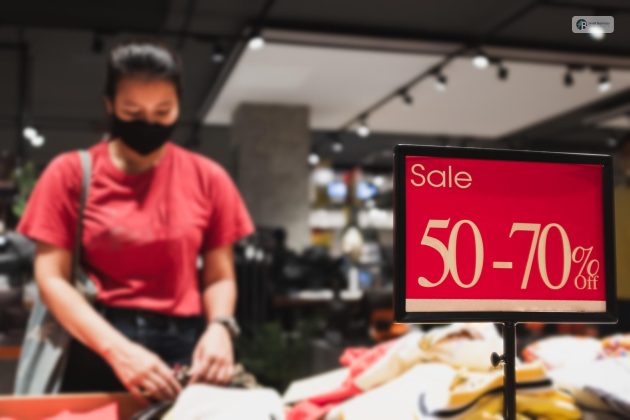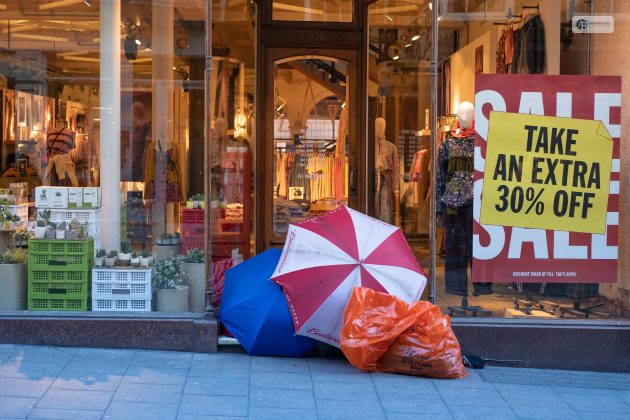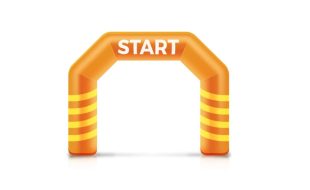Table Of Contents
Retail Advertising: A Comprehensive Study On Its Types And Functions
Retail advertising exposes a dynamic parallel where creativity and strategies collaborate to captivate customers. Digital advertising and online marketing are two very important components of retail businesses. However, when it comes to retail advertising, there are quite a few unique sets of challenges that marketers have to deal with.
A typical retail brand needs to navigate through the uncertainties and curate a robust advertising strategy to reach out to its target audience.
From selecting the correct platform to reaching out to potential customers, preparing the correct marketing mix, and making compelling messages that resonate with the consumers, retailers go through multiple obstacles whenever it comes to advertising.
In this article, we will be exploring the core of retail advertising that retailers may use to generate sales, get new customers, and achieve a new level of brand promotion.
What Do You Mean By Retail Advertising?

Retail advertising is a marketing strategy that is particularly designed to promote services or products that a business offers. These products are sold directly to the customers.
Retailers get to use multiple channels like TV commercials, print ads, online ads, and social media to successfully reach their target audience and compel them to make a purchase.
Retail advertising showcases the features along with the benefits of services or products in a way that resonates with potential customers. This will, therefore, help drive sales.
The Key Focus
Retail advertising typically focuses on promotions, special offers, and sales events to pull in shoppers. They mainly aim to develop a sense of urgency among the customers.
A nicely curated retail advertising campaign may help the business generate leads, increase its brand awareness, and, finally, drive revenue.
Functions Of Retail Advertising

Here are the most appreciated functions of retail advertising as a marketing tactic:
Promotion Of Services And Products
One of the main functions of retail advertising is promoting the products and services that a retailer offers. Retailers put up the features of their products, benefits, and USPs through multiple channels like television, print media, radio, social media, and online platforms. This helps them create awareness and makes them purchase the products.
Brand Awareness And Identity
Retail advertising has a vital role in building and maintaining awareness of the brand. Well-designed and consistent ad campaigns help establish the brand identity of the retailer in the customers’ minds. The identity includes the values of the retailer, personality, and mission, which differentiates it from the competitors and nurtures a sense of trust and familiarity among customers.
Creating Customer Interest And Desire
Effective retail advertising is curated to pique the interest of customers and sow a desire for advertised services or products. By using compelling visuals, persuasive language, and emotional appeals, retailers may stimulate the curiosity of customers. This makes them explore further.
Generating Sales And Revenue
The final goal of any retail advertising campaign is to generate sales and revenue. Well-executed advertising plans may lead to an increase in foot traffic in the store or high web traffic for online retailers.
Informing About Events And Special Offers
Retail advertising offers a platform to communicate sales events, special offers, and promotions. Retailers may use advertising to announce their holiday discounts, clearance sales, BOGO offers, and other offers. This information allows the retailers to attract customers and compel them to make a purchase.
Educating Consumers
Retail advertising is a way to educate customers about the benefits, features, and uses of services and products. Demonstrations, in-depth product descriptions, and comparisons may help the customers make well-informed buying decisions. By offering value proposition, retailers may establish themselves as trustworthy and knowledgeable sources.
Engaging Target Audience
Effective retail advertising helps engage the target audience through relatable and interactive content. This may include UGC campaigns, storytelling, polls, quizzes, and contests. Engaging content helps create a firm bond between the customers and the brand. This further boosts brand loyalty.
Building Customer Loyalty
Retail advertising is all about attracting potential customers and recalling the existing ones. By having a consistent presence via advertising, retailers may reinforce the loyalty of customers. Personalized offers, loyalty programs, and exclusive content for existing customers may be promoted via advertising to help strengthen the connection between the retailer and its consumer base.
Types Of Retail Advertising

Retail advertising covers a variety of channels and strategies to promote services or products directly to customers in a retail setting. This kind of strategy looks forward to attracting customers, enhancing brand visibility, and driving sales.
Here are some of the most common types of retail advertising that retailers can make use of:
In-Store Displays
In-store displays are tangible setups in retail locations that portray products prominently. Shelf takers, end caps, and aisle displays are very effective in grabbing the attention of customers. They are also excellent tools to highlight particular promotions or items. These displays usually make use of creative visuals or signage to tell the value of products. They also encourage customers to do impulse buying.
Window Displays
Window displays are attractive arrangements of products or visuals on the windows of stores. Their main aim is to catch the attention of anyone who passes by. To maintain relevance and freshness, window displays change depending on holidays, seasons, or promotional events.
Point-Of-Sale Materials
Point-of-sales materials include banners, posters, counter cards, and shelf cards that are very strategically placed near every checkout counter. This kind of material offers customers last-minute upsell opportunities, promotions, and complementary product suggestions as they get to finalize their purchases.
Flyers And Circulars
Digital or printed flyers and circulators are circulated in the stores or through email and mail to update the customers about ongoing sales, new arrivals, or promotions. These resources offer a comprehensive overview of the recent offerings and inspire the customers to visit the website or go to the store.
Digital Advertising
We are in a digital age, and online plays a vital role when it comes to retail advertising. These may include:
- Social Media Advertising
- Search Engine Advertising
- Email Marketing
- Banner Ads
Mobile Advertising
With the increase in the usage of smartphones, mobile advertising is now a lot more essential
than before. Retailers may use mobile applications, location-based ads, and SMS marketing to connect with customers on their mobile phones with personalized promotions and offers.
Radio And Television Advertising
While these forms of traditional media have become far less dominant, they are not dormant. They still hold authority over specific markets. Retailers can make commercials that convey their brand image along with unique selling points. This helps them reach a broader spectrum of audiences.
Direct Mails
Direct mail involves the process of sending tangible promotional materials, like catalogs or postcards, directly to the customers. This kind of approach allows retailers to target a specific set of geographic areas or consumer segments with their tailored offers.
Loyalty Programs
Loyalty programs inspire repetitive business by providing loyal customers with discounts, rewards, or exclusive offers. These kinds of programs typically utilize apps or cards to track purchases and give personalized promotions.
Interactive Kiosks
Interactive kiosks in stores offer customers with information about a product, its reviews, and the ability to place orders. They improvise the shopping experience and may help the customers make informed purchases.
Augmented Reality And Virtual Reality
These kinds of technologies allow customers to interact virtually with products before they make a purchase. AR applications may project how the furniture will look in a room. On the other hand, VR stimulates experiences like test driving a vehicle.
Pop-Up Shops
These are temporary retail locations that are great at creating a sense of exclusivity and urgency. These short-term settings usually align with particular events or even seasons to attract customers who are looking for unique offerings.
Cooperative Advertising
This advertising involves a retailer’s partnership with the product manufacturer or the supplier to share the advertising costs. This is beneficial for both parties as it increases product visibility, hence driving sales.
Catalogues
While it is less common these days, some retailers still use catalogues to show their product range. Customers can get a physical copy or access one online.
Sponsorships and events
Retailers may sponsor local events or even host their own events. This fosters engagement with the community and helps promote their products. This kind of approach helps build loyalty for the brand and nurtures a very positive brand image.
What Should You Include In A Retail Advertising Strategy?

As we have already discussed before, retail marketing is a complicated process and is also multilayered. For this exact reason, before you get into retail marketing, you need to craft a very comprehensive retail marketing strategy that involves:
- Multiple channels via which goods can get advertised.
- The target market
- Pricing strategy
- Customer data sources
- In-store layout and merchandising, along with online shopping opportunities.
- Advertising creatives with the correct approach for existing, potential, and repeat customers.
How To Build A Retail Advertising Plan For A Retail Store?

Building a retail advertising plan for a retail store involves a very systematic process to define the target audience, identify your USP, set goals and objectives, create tactics and strategies, and finally measure results.
Here are the steps that one may follow:
Define Your Target Market
Begin with identifying who your ideal customer is. Conduct market research that will help you determine your psychographics, demographics, and the behaviors of the audience and online shopping opportunities.
In digital marketing, retailing companies that expand their store functions to multiple markets get the benefits of international retail advertising.
Identify Your USP
Decide what sets your store apart from others. What will be the reason for which customers will choose your retail business over the others? This unique value proposition can be store location, pricing, quality, sections, or customer service.
Set Goals And Objectives
Define what it is that you wish to achieve through your advertising plan. Set your SMART goals and align them with the overall objectives of the business.
Develop Strategies And Tactics
For any advertisement plan to work, it needs to be backed by a solid marketing plan. The marketing plan should have all four of its Ps in the core.
Product: Decide which products you need to promote and how you would merchandise them.
Price: Decide upon the pricing, such as promotions, discounts, or bundles.
Promotion: Create a marketing campaign that includes retail advertising, social media, public relations, events, email marketing, etc.
Place: Decide where and how you would want to distribute the products. For instance, it can be online, partnerships, or a typical brick-and-mortar store.
Measure Results
Set up metrics to help track your progress. Using analytical tools to constantly monitor website traffic, email open rates, social media engagement, and conversion rates is way easier than doing it manually. Analyze the results every day and adjust the tactics and strategies accordingly.
Best Examples Of Retail Advertising
Here are some globally successful retail advertising examples that can help you gear up your advertising game.
IKEA
A two-page advertisement from IKEA featuring in the REAL SIMPLE magazine edition of September 2022 has a major impact because of multiple key factors.
In the beginning, the alignment of the brand with the magazine’s target audience was impeccable. REAL SIMPLE mainly caters to people looking for ingenious and practical solutions to ease their hectic lives. This ad portrays an IKEA cart crafted for numerous functions. It resonated with a smart storage remedy.
Moreover, the communication in the advertisement sternly underscores the core strengths of IKEA – user-friendliness and affordability.
Milani
In the cosmetics sections of your typical drugstore, the aisle that offers beauty products is generally bustling with options.
However, the makeup brand Milani differentiates its mascara through very compelling in-store advertising that further accentuates its USPs.
Within the advertisement, shoppers are presented with a line of images that portray the impact of the mascara, displayed with the help of before and after snapshots that show how effective the product is.
In addition to it, the advertising also informs the customers about the three special advantages of the product.
The Bottom Line
Retail advertising is stronger than you can imagine. The campaigns are designed in such a way that every passing individual is bound to get compelled by them.
However, it is not as easy as it appears. There are tricks and tactics that one has to effectively use to ensure the success of these campaigns.
Continue Reading:














